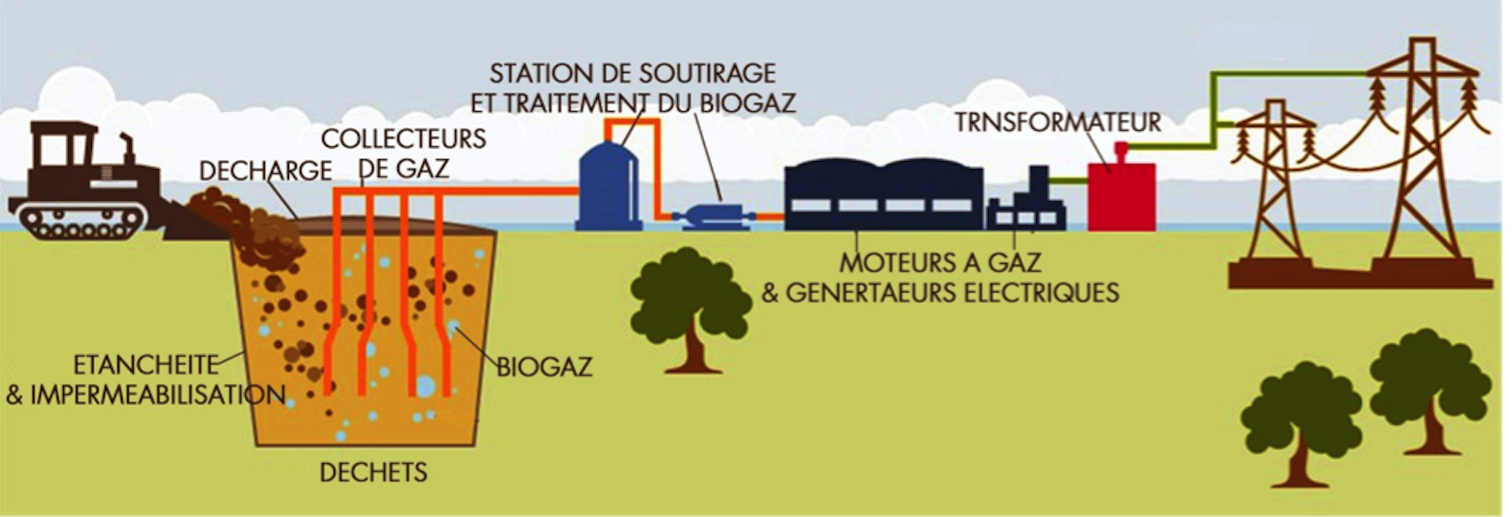
– A brand new project for public lighting in Africa
-The bioelectric plant can generate 5 MW, the equivalent of a park of 11 wind turbines
– Any excess could be sold to “green” businesses
A first for Morocco and Africa. The city of Fez is 30% lit up, thanks to its household waste. Initiated by the American solid waste management company, Ecomed, under contract to the Fez-controlled landfill site and the City Council, this project has effectively contributed to improving the management and operation of the landfill site, by converting biogas into electricity via a 1 Megawatt power plant.
This technology was installed and maintained by Clarke Energy, the world leader in cogeneration projects and the recovery of biogas, using GE’s Jenbacher gas engine technology. This project was implemented in the city of Fez, a pioneer of sustainable development in Morocco and Africa that uses clean, renewable energy from its waste to power public lighting.

For its managers, the Fez landfill site represents a successful model for recovering energy from waste, and contributing to the production of electricity from renewable energy sources.
“The total capacity of the bioelectric plant can reach 5 Mw, and produce 40,000 Mwh/year, the equivalent of a park of 11 wind turbines (according to the French Union of Renewable Energies, wind energy in France, 2012), and can recover the equivalent of 26 million m3 of methane (biogas) per year,” explain managers at Clarke Energy.
According to them, “Biogas is a 100% renewable energy, derived from the fermentation of waste, to produce methane (CH4), which is 20 times more polluting than CO2.” Mouhami Hassan, CEO of Ecomed, tells the same story:
“The Fez landfill site, which went into operation in 2004, processes 750-1000 metric tons of solid waste daily.” Besides the processing of solid waste, his company has installed two biogas collection systems, a 500 Nm3/h step-down station, flares, and other equipment, in order to launch the anaerobic digestion process which, through the biological degradation of organic matter, recovers the biogas resulting from this operation, and converts it into electrical energy.

“Our collection system totals some 12.7 km of HDPE (High Density Polyethylene) pipes, and 25 wellheads for measurement and control,” explains Mouhami, and adds: “These facilities are extremely expensive. For example, one metre of HDPE piping costs DH 500 (about 44 euros). To recover the biogas from this 110-hectare landfill site, we installed 12,777 meters of this type of pipe.”
This was before the commissioning of the first one-megawatt unit for generating electrical energy from biogas, in November 2013. This unit remained in the trial stage until early June 2015.
Recently, the landfill site was equipped with a delivery station and a 20,000-volt transformer; these installations were funded by Ecomed whose overall investment in the landfill site is 100 million dirhams (approximately 8.9 million euros), of which 26 million dirhams (approximately EUR 2.3 million) was spent on the bioelectrical equipment alone. For its part, the Fez Autonomous Water and Electricity Authority Fez (RADEEF) funded the construction of a medium-voltage line, as well as linking the bioelectrical station to the city network.
Moreover, the return on investment was immediate. For this first year of operations (2015), the renewable energy production at the landfill site is estimated at 8660 MWh/year, or nearly 7 million DH in revenue.
Note that the power supplied is 1 megawatt. Nevertheless, the total capacity of the landfill site from this year is 26,000 MWh/year, for a power supply of 3 megawatts. This capacity will ultimately grow to 43,300 MWh/year – or a power supply of 5 megawatts – while 3.5 megawatts is required to illuminate the whole city.
“The rest of the energy produced could be sold at preferential prices to other green businesses, i.e. transportation or cement companies,” say the project managers. In order to do this, a law will have to be passed in parliament, which would prevent the National Water and Electricity Office (ONEE) would no longer have a monopoly on this market.
Landfilling
Between April and June 2015, the garbage taken to the Fez landfill site totalled some 2.7 million tonnes – equivalent to 44m3 of buried waste. This mass encourages the proliferation of bacteria, and produces biogas that is recovered as energy. In terms of revenue, thanks to the 2.7 million metric tons of waste processed, the contractor has paid more than 110 million dirhams (approximately 9.7 million euros) into the city’s coffers. This provides the sector with 40.33 DH/metric ton of waste.
Youness SAAD ALAMI – L’Economiste, @SAADYalami






















